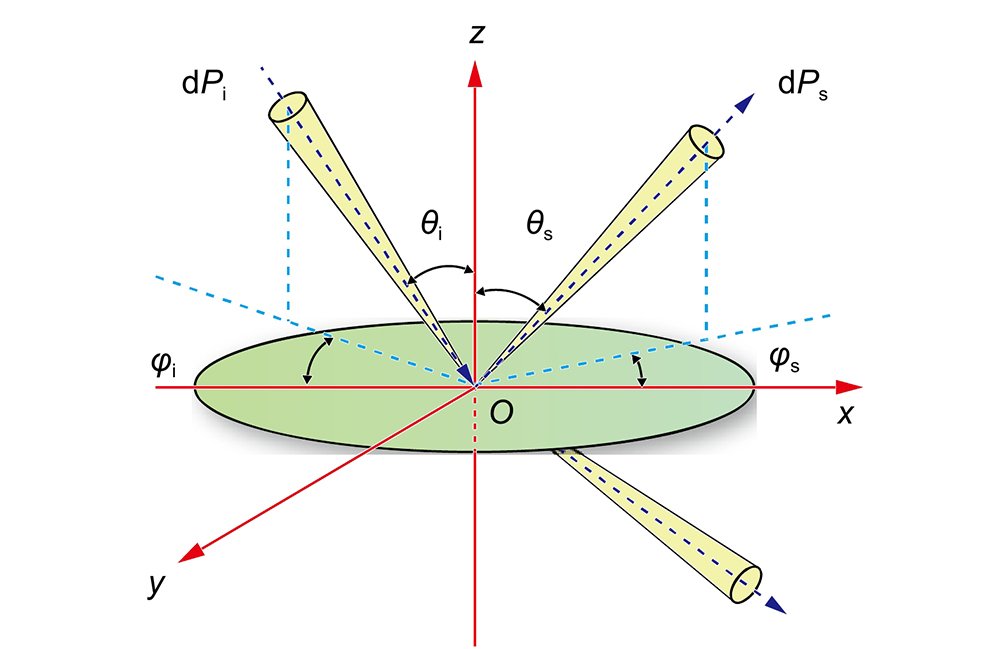Yunhao Zhang, Zheqiang Zhong, Bin Zhang. Analysis of surface scattering characteristics of ultra-smooth optical components in gravitational wave detection system[J]. Opto-Electronic Engineering, 2023, 50(11): 230222-1
Search by keywords or author
- Opto-Electronic Engineering
- Vol. 50, Issue 11, 230222-1 (2023)

Fig. 1. Scattering diagram of the random ultra-smooth surface

Fig. 2. Distributions of angle resolved scattering under different conditions. (a) Different surface roughness; (b) Different incidence angles; (c) Different autocorrelation lengths
Fig. 3. Relationships between polarization ARS and scattering angles of isotropic optical elements. (a) Scattering characteristics ofS-polarization light; (b) Scattering characteristics of P-polarization light
Fig. 4. Relationships between polarization ARS and scattering azimuth angles in four polarization states. (a) Parallel polarization; (b) Cross polarization
Fig. 5. Relationships between polarization ARS and scattering azimuth angles at different incident angles. (a) θi= 15°; (b) θi= 30°; (c) θi= 45°; (d) θi= 60°
Fig. 6. Relationships between ARS and four different parameters under the Gaussian statistical distribution. (a) Incidence angle; (b) Scattering azimuth angle; (c) Autocorrelation length; (d) Surface roughness
Fig. 7. Relationships between ARS and four different parameters under the fractal statistical distribution. (a) Incidence angle; (b) Scattering azimuth angle; (c) Slope; (d) Surface roughness
Fig. 8. Relationships between ARS and four different parameters under the Cauchy-Lorenz statistical distribution. (a) Incidence angle; (b) Scattering azimuth angle; (c) Cut-off frequency; (d) Surface roughness

Set citation alerts for the article
Please enter your email address



